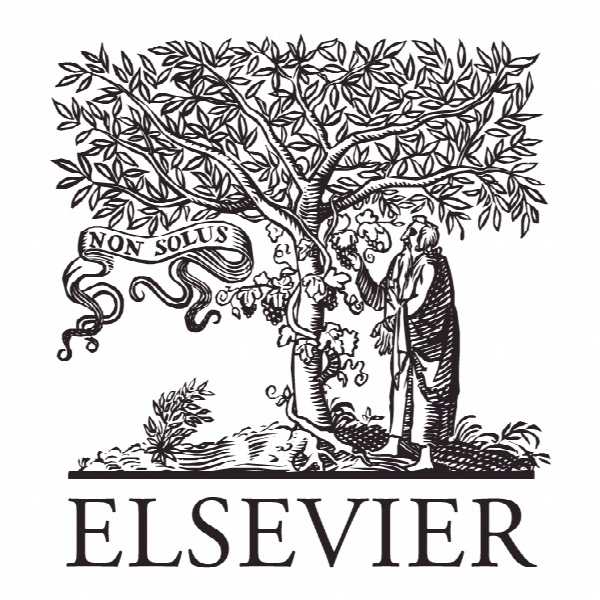شخصیت برند فعال و مسئول: بر اساس رابطه ی تجربه برند و ساختار های کلیدی روابط Responsible and active brand personality: On the relationships with brand experience and key relationship constructs
- نوع فایل : کتاب
- زبان : انگلیسی
- ناشر : Elsevier
- چاپ و سال / کشور: 2018
توضیحات
رشته های مرتبط مدیریت
گرایش های مرتبط بازاریابی
مجله تحقیقات تجاری – Journal of Business Research
دانشگاه University of Western Australia – Perth – Australia
منتشر شده در نشریه الزویر
کلمات کلیدی انگلیسی Brand experience, Brand personality, Satisfaction, Trust, Brand loyalty
گرایش های مرتبط بازاریابی
مجله تحقیقات تجاری – Journal of Business Research
دانشگاه University of Western Australia – Perth – Australia
منتشر شده در نشریه الزویر
کلمات کلیدی انگلیسی Brand experience, Brand personality, Satisfaction, Trust, Brand loyalty
Description
1. Introduction Since Aaker’s (1997) seminal work on brand personality (BP), a growing body of research on this topic has been built. The concept of BP is based on human personality using a brand-as-person metaphor to understand brand perception (Caprara, Barbaranelli, & Guido, 2001). BP is defined as “the set of human personality traits that are both applicable to and relevant for brands” (Azoulay & Kapferer, 2003, p. 151). BP is an important concept for marketing since consumers assign personality qualities to brands in an anthropomorphism process to animate, humanize or personalize brands in order to build a strong consumer-brand relationship (CBR) (Fournier, 1998). In recent years, the values of BP for the success of a brand have been well documented in the literature (e.g., Brakus, Schmitt, & Zarantonello, 2009; Sung & Kim, 2010) and BP is among the most important research streams on CBR research (Fetscherin & Heinrich, 2015). A number of studies have been focusing on the development of reliable, valid and practical measurement tools of BP (see Geuens, Weijters, & De Wulf, 2009; Rauschnabel, Krey, Babin, & Ivens, 2016). Among these studies, the predominantly applied measure is the Aaker’s (1997) BP scale (BPS) (Eisend & Stokburger-Sauer, 2013). She adapts the human five-factor model of personality “the Big Five” to develop a five-dimension BPS: sincerity, excitement, competence, sophistication, and ruggedness. In spite of the wide use of Aaker’s BPS in research and its important contribution for the theory of BP, it also received several criticisms due to its conceptual and applicability limitations (Avis, Forbes, & Ferguson, 2014; Azoulay & Kapferer, 2003; Geuens et al., 2009; Rauschnabel et al., 2016). In response, researchers offer a wide range of BPS alternatives (Avis et al., 2014). However, most of them include human attributes (e.g., age, gender), and only “a few studies focus exclusively on attributes derived from human personality research” (Rauschnabel et al., 2016, p. 3078). A BPS based exclusively on human personality traits avoids the conceptual and empirical muddle among distinct brand identity facets (e.g., physical facet, culture, relationship) that can be induced by a tooglobal definition of BP (Azoulay & Kapferer, 2003). In regard to this, Geuens et al. (2009) propose a new five-dimensions BPS (i.e., responsibility, activity, aggressiveness, simplicity, and emotionally) based only on attributes derived from human personality (Rauschnabel et al., 2016), that is reliable and cross-culturally valid that resembles but distinct from Aaker’s BPS. However, only a few studies apply Geuens et al.’s BPS (e.g., Garsvaite & Caruana, 2014; Goldsmith & Goldsmith, 2012; Gordon, Zainuddin, & Magee, 2016; Matzler, Strobl, StokburgerSauer, Bobovnicky, & Bauer, 2016). Geuens et al. (2009) suggest that a further investigation of the antecedents and consequences of the different BP dimensions is needed. In an attempt to provide further empirical evidence on the validity of Geuens et al.’s BPS, the present study tests the scale in a nomological network that includes two BP dimensions (i.e., responsibility and activity); four brand experience (BE) dimensions (i.e., sensory, affective, behavioral, and intellectual) as their antecedents; and three CBR constructs (i.e., satisfaction, trust, and loyalty) as their consequences. Responsibility includes three personality traits: down to earth, stable, and responsible; while activity refers to the other three personality traits: active, dynamic, and innovative. This study focuses on these two dimensions of BP because responsibility and activity dimensions are the two most relevant BP traits with regard to CBR (Clemenz, Brettel, & Moeller, 2012; Gordon et al., 2016). In addition, nowadays brands are more interested in being perceived as either socially responsible (Sen, Du, & Bhattacharya, 2016) or dynamic and innovative (Nguyen, Yu, Melewar, & Chen, 2015).


